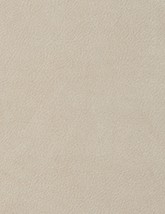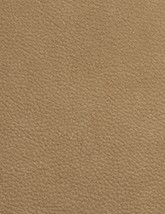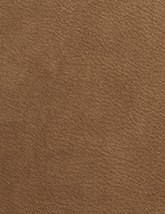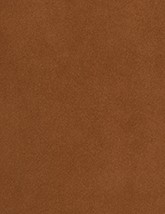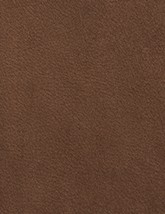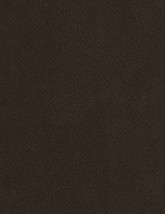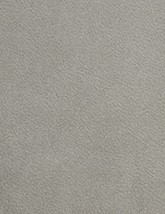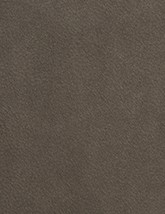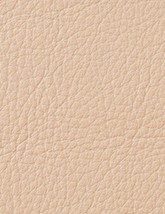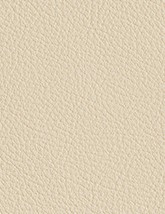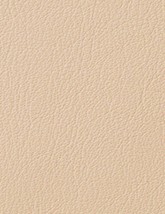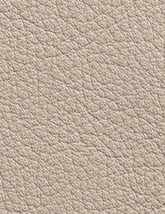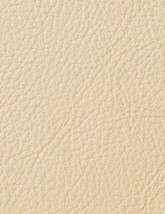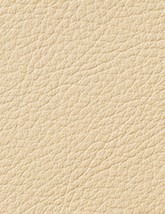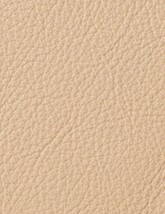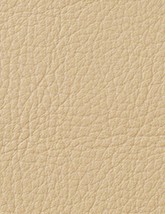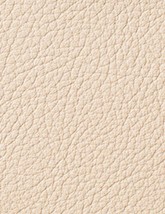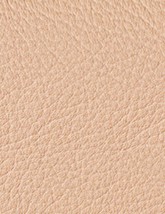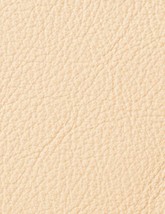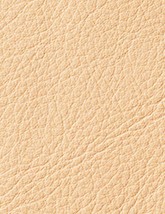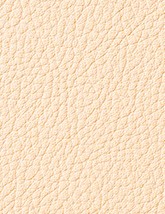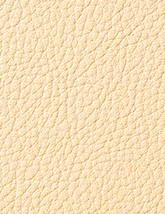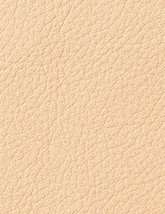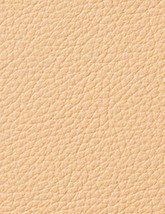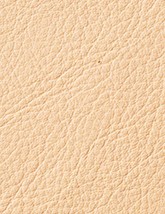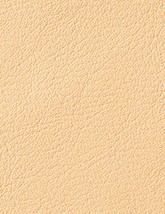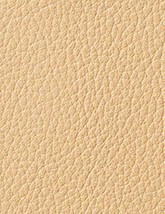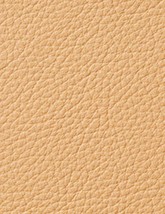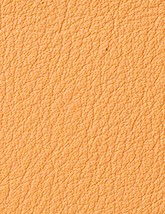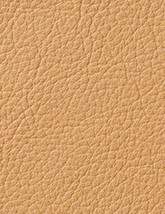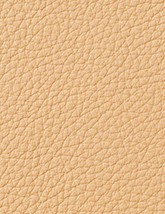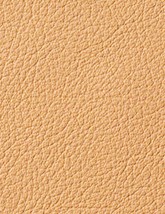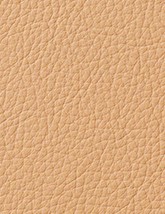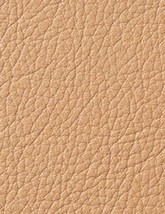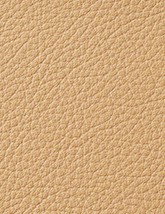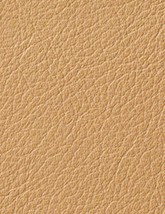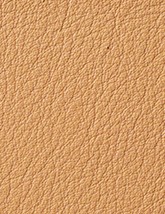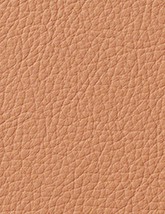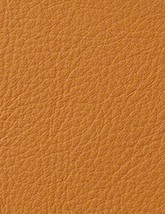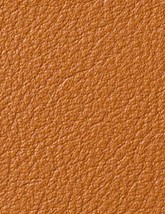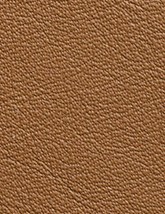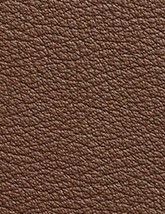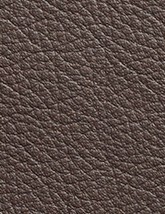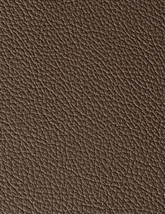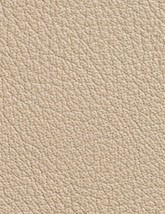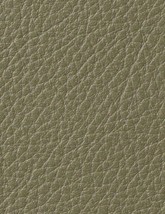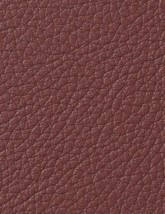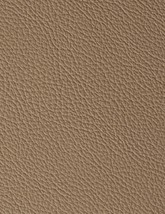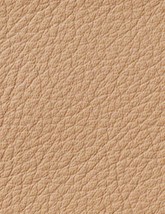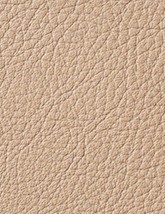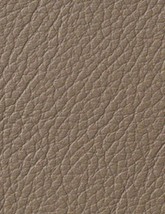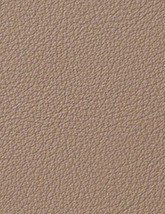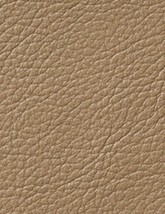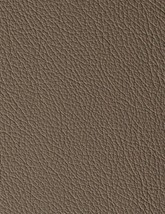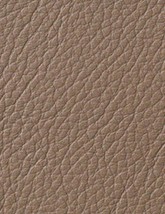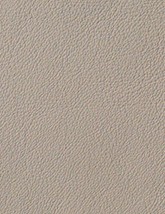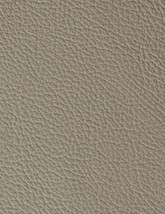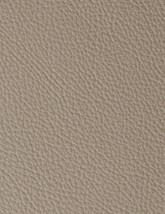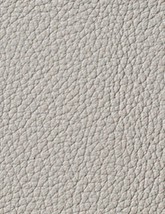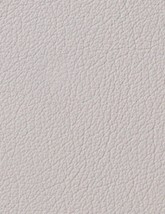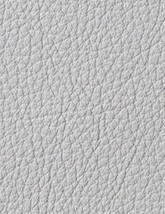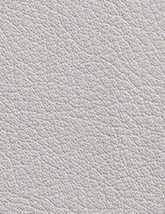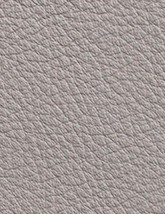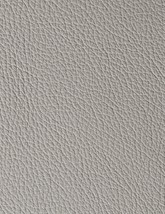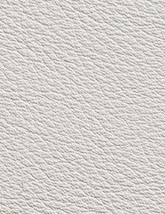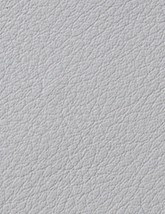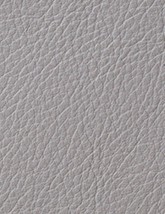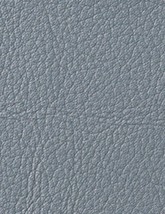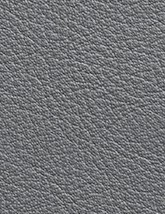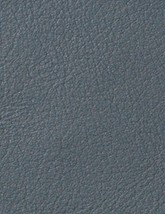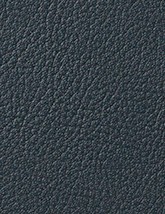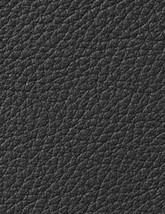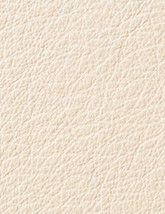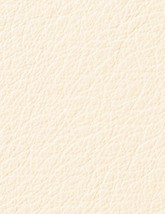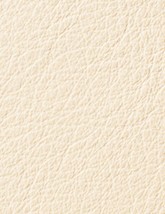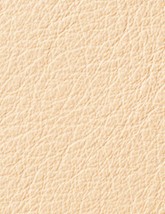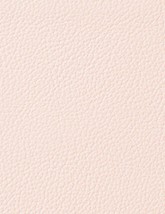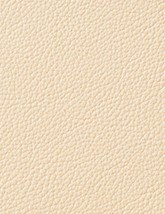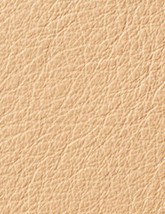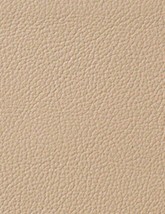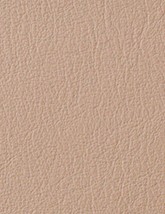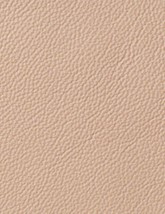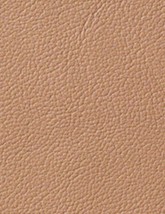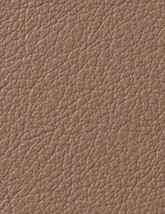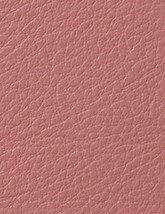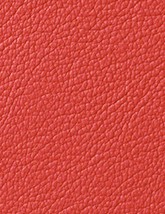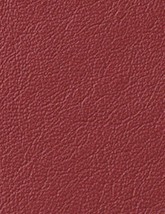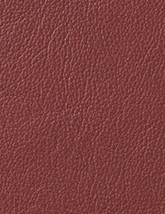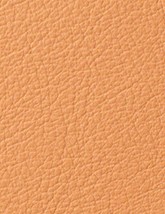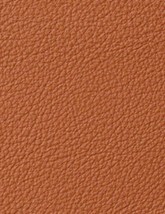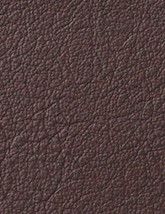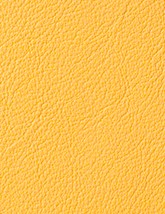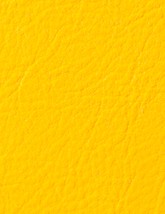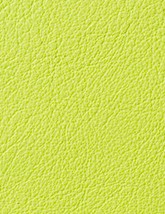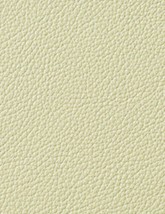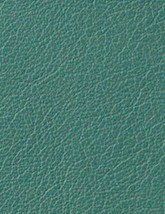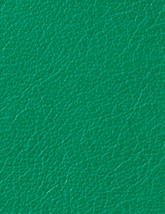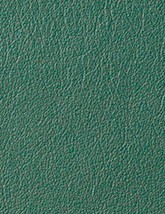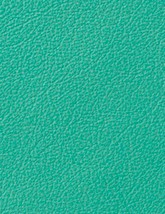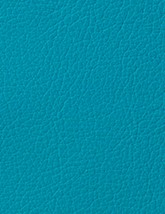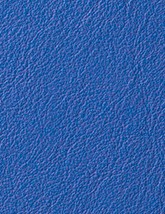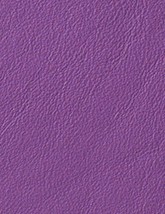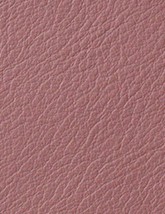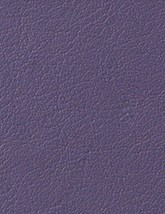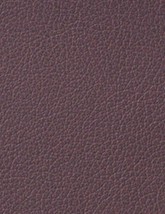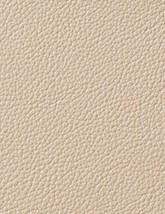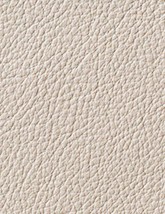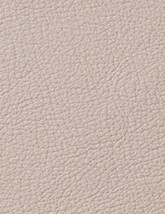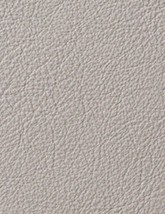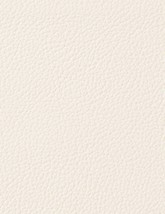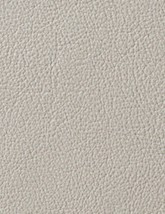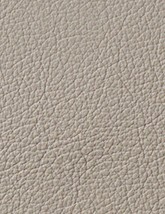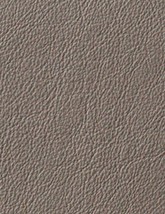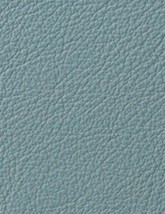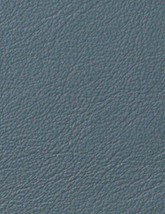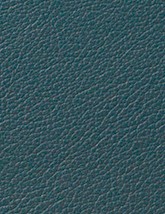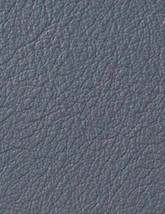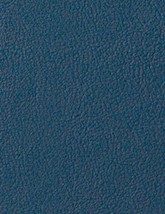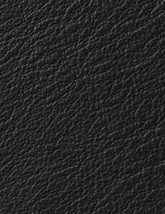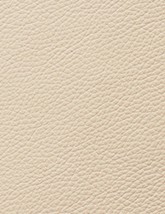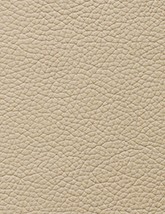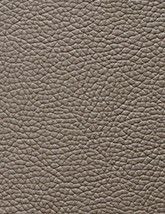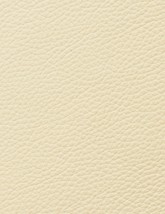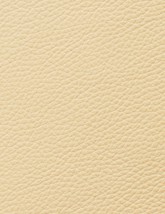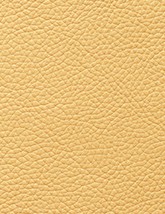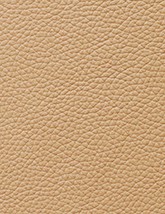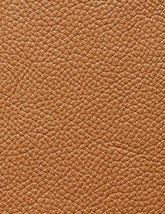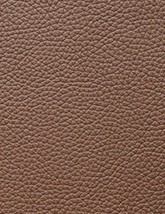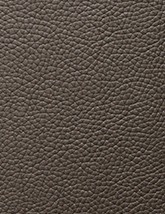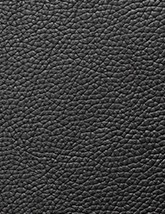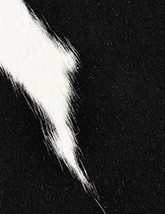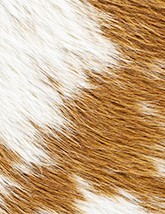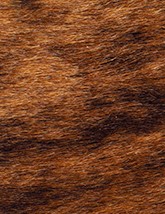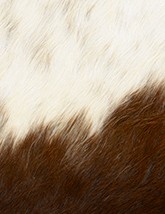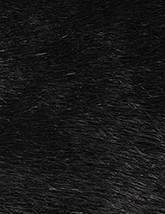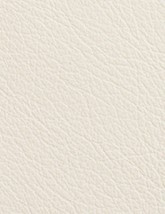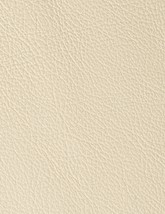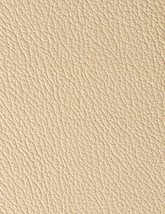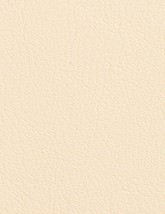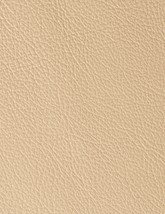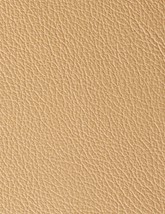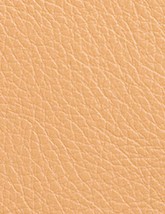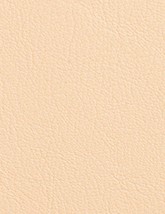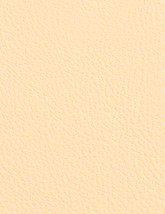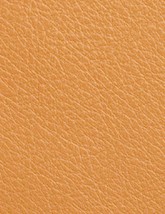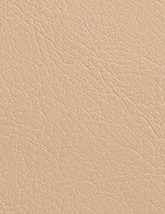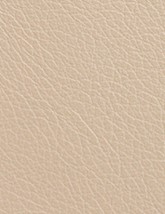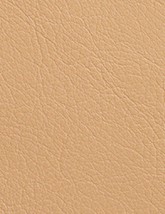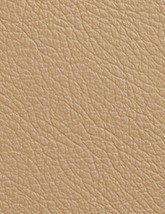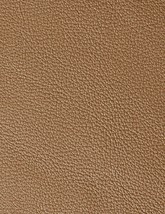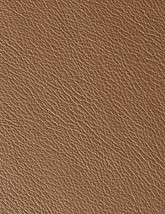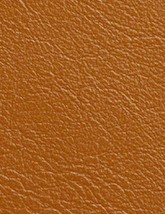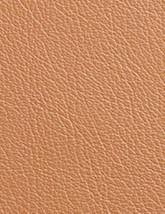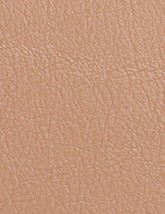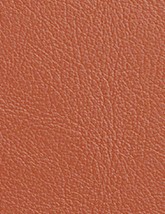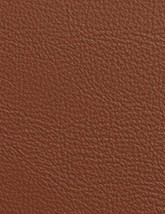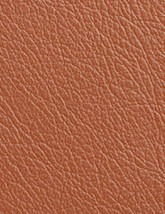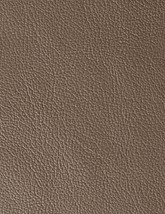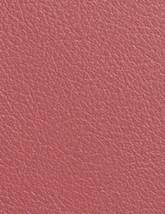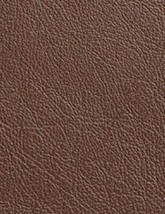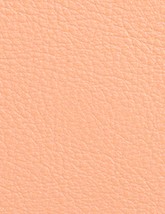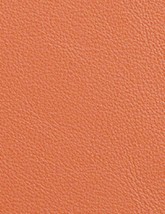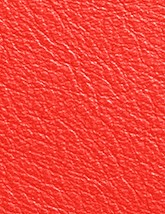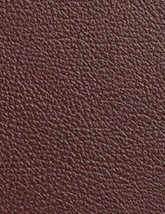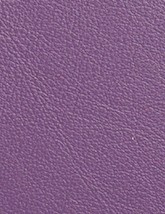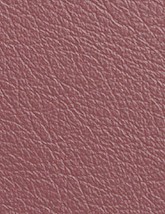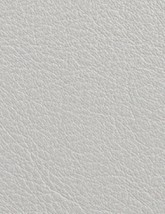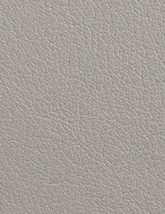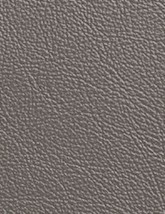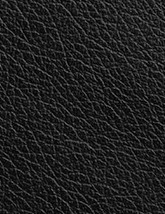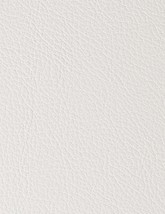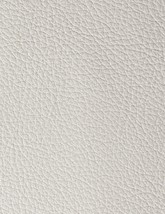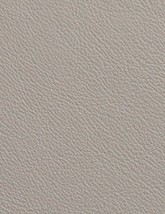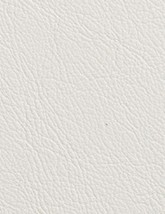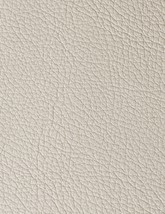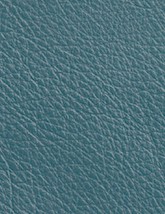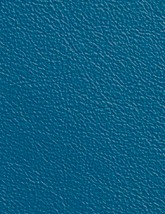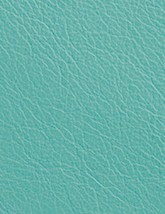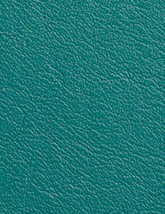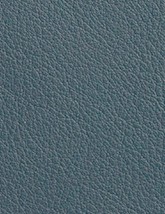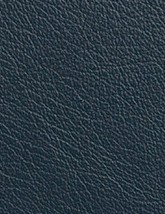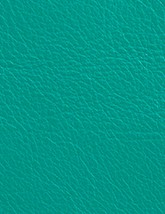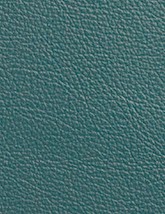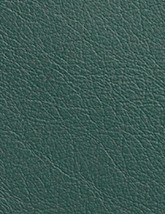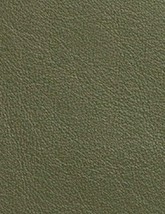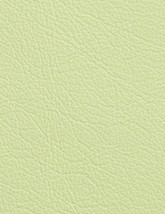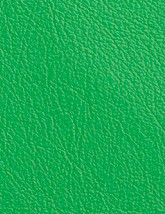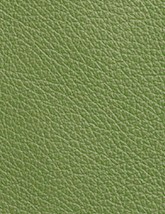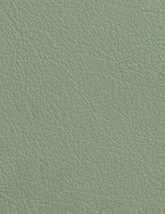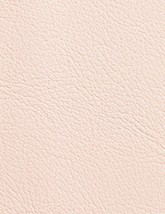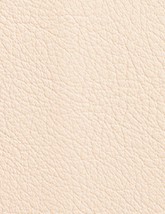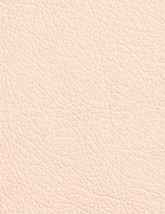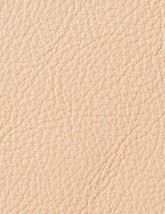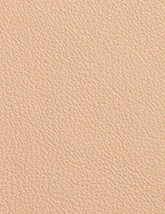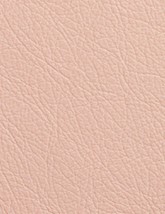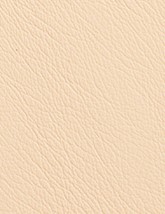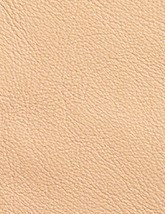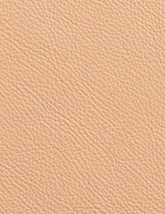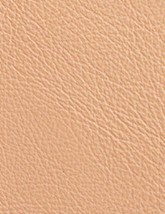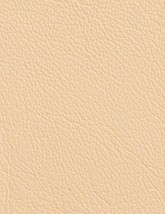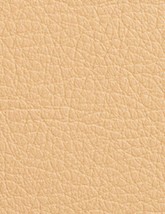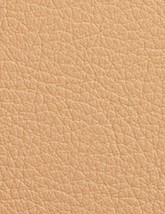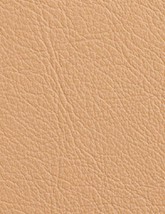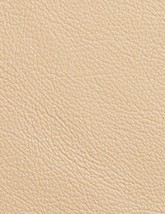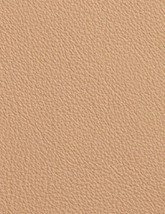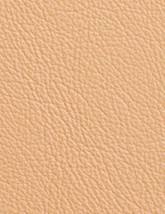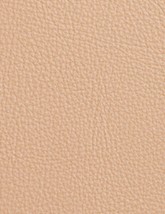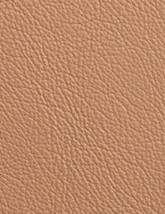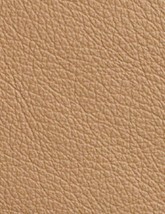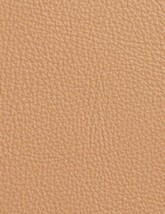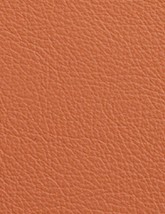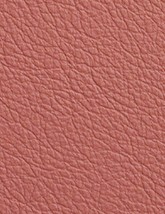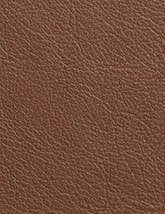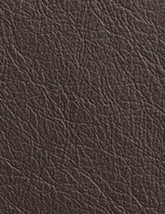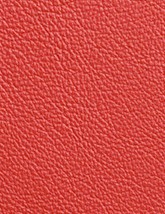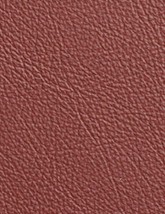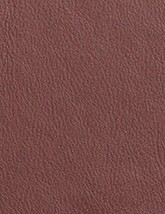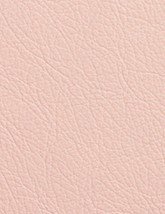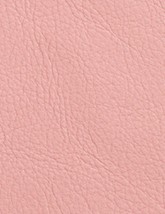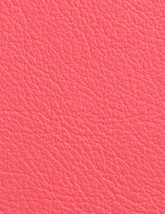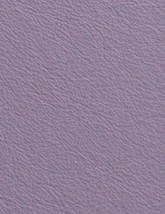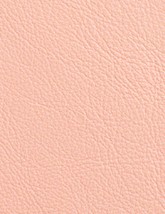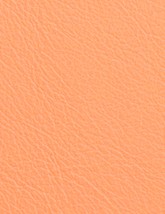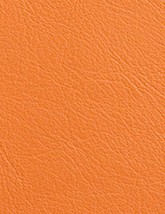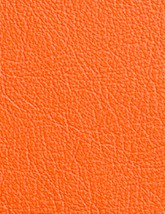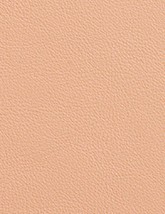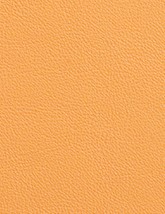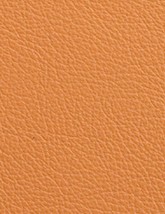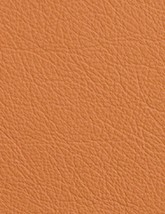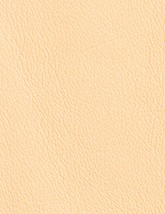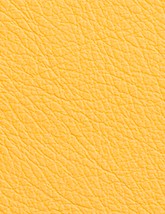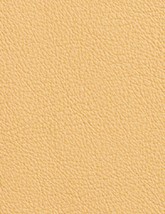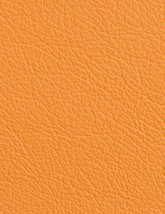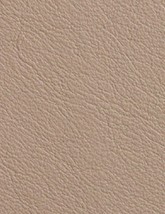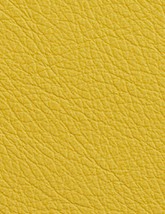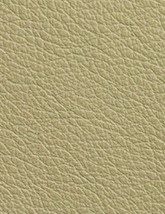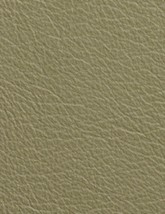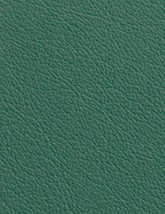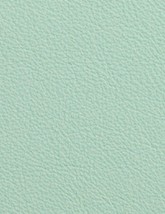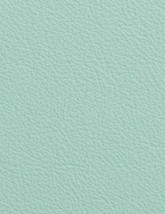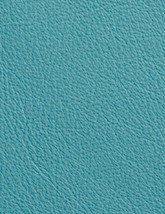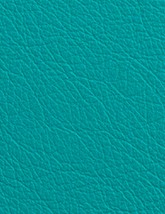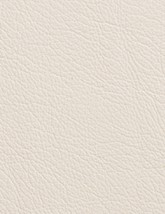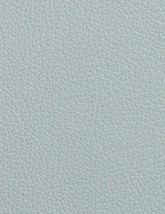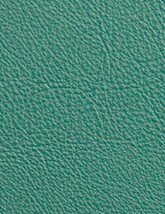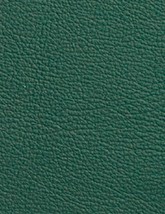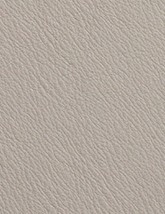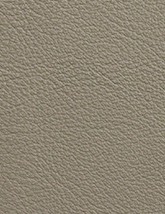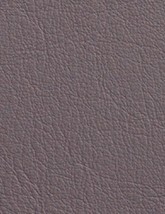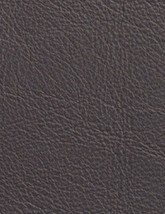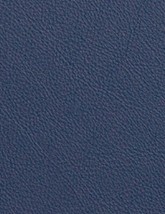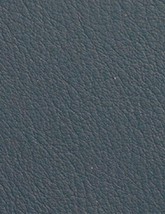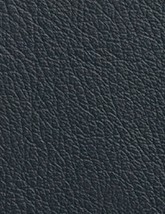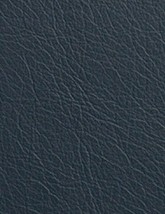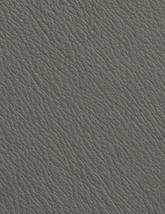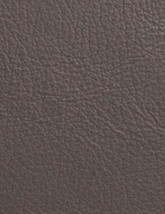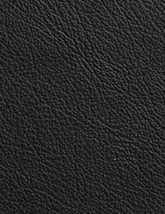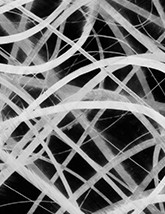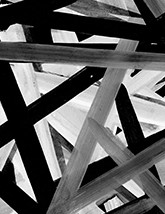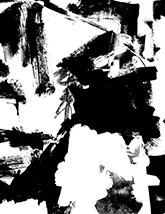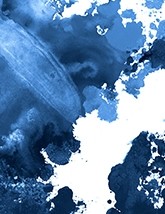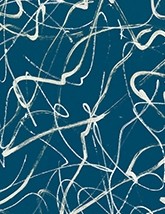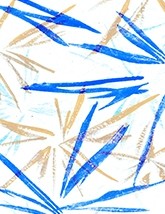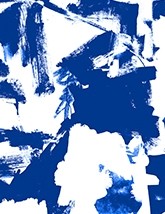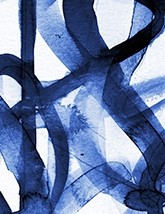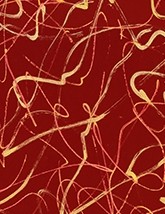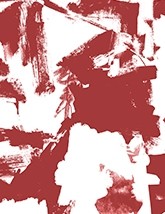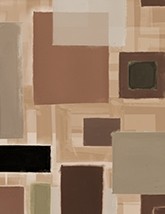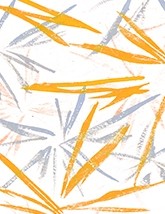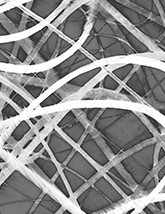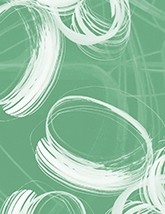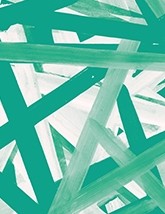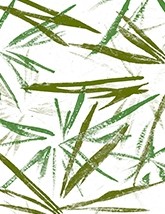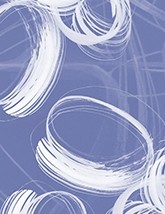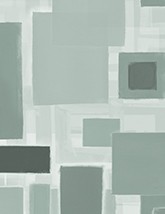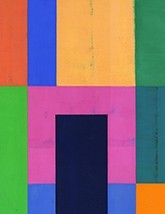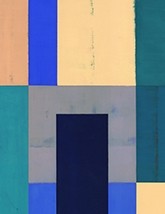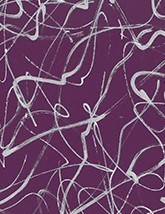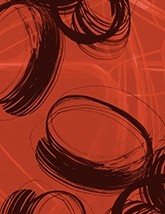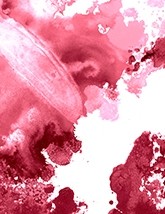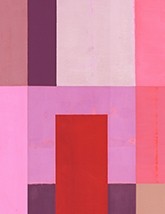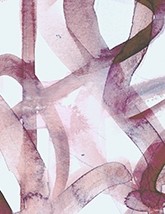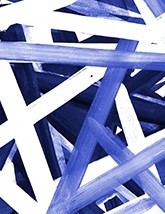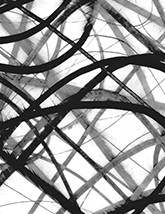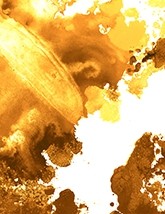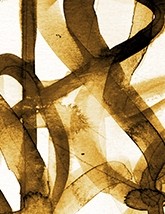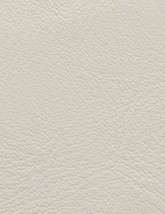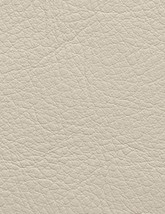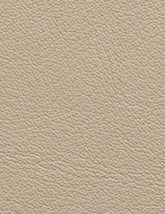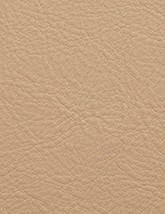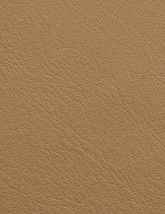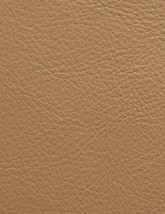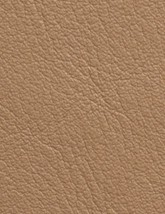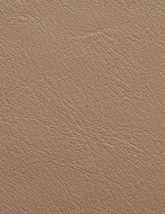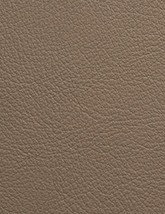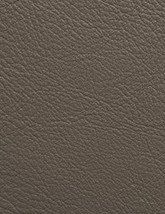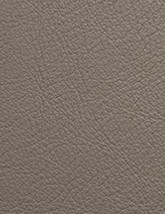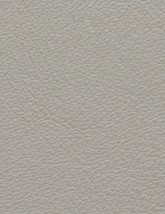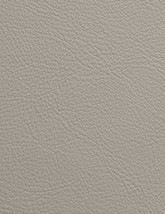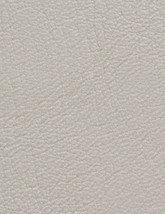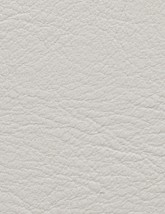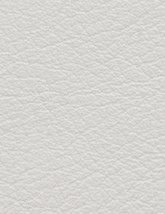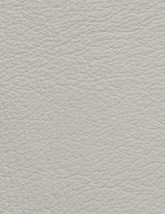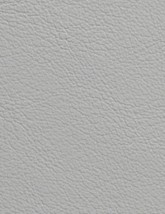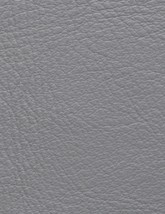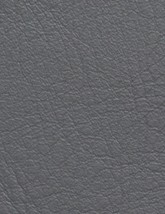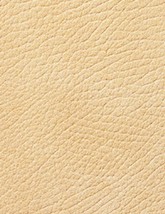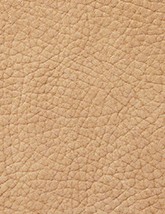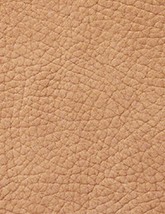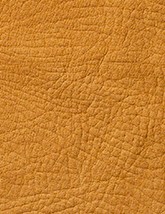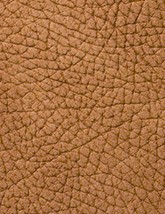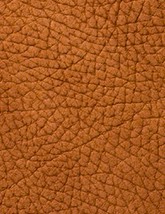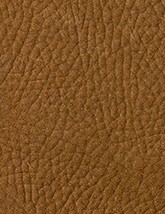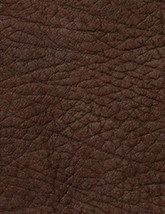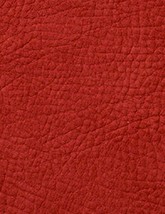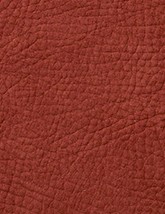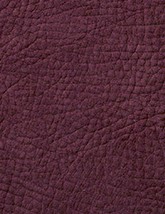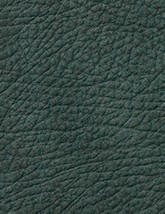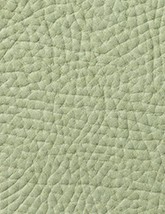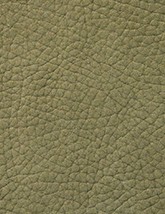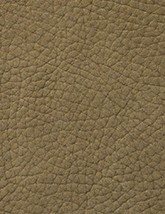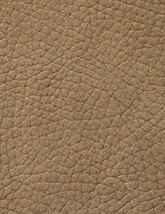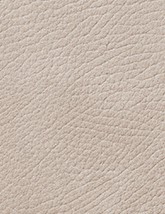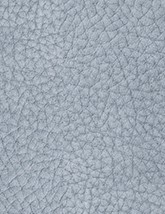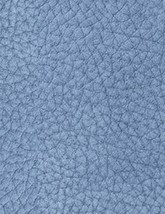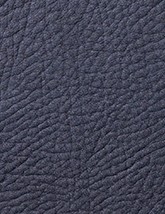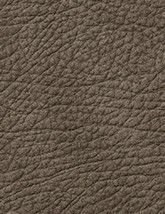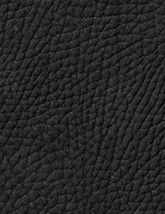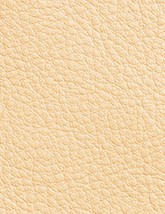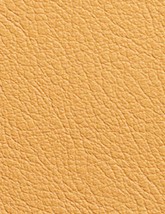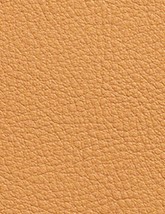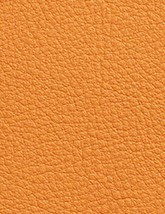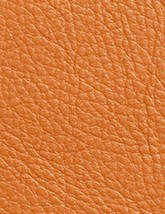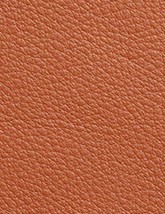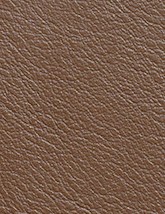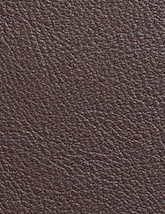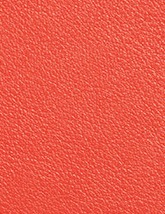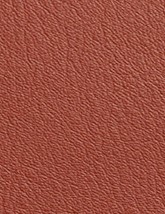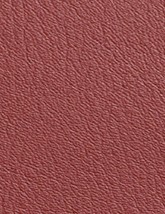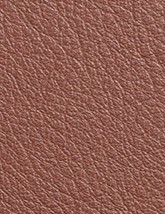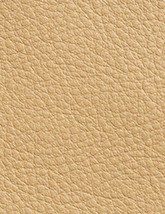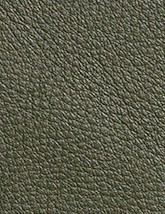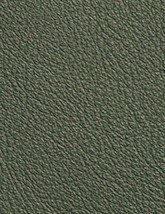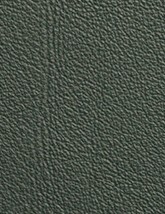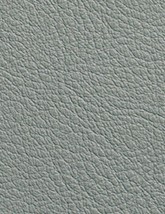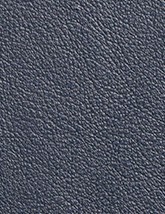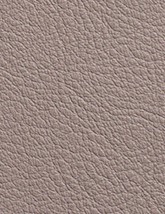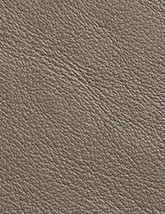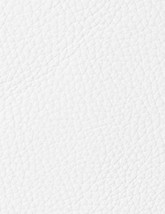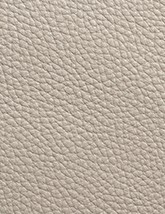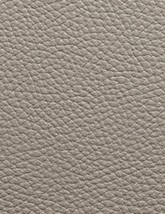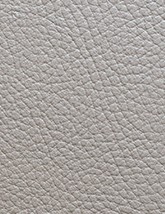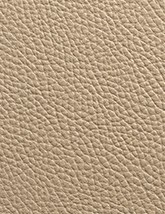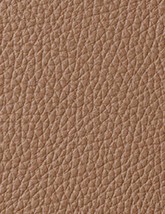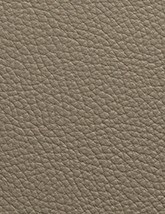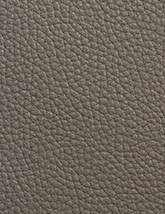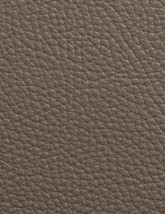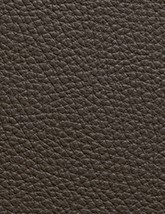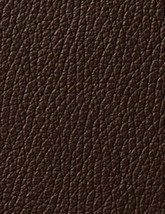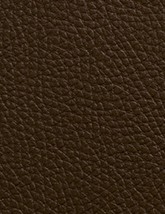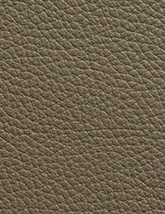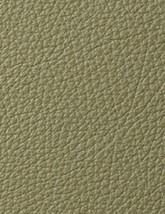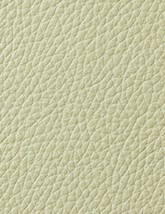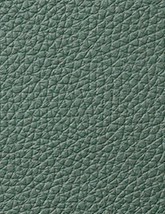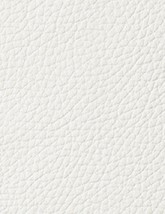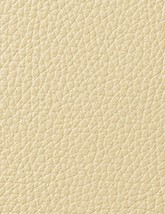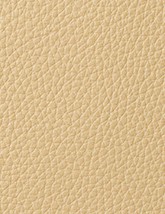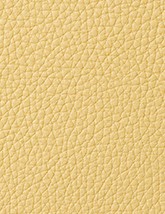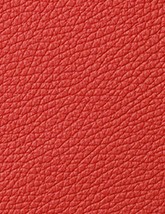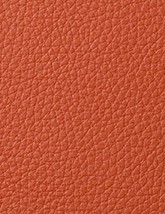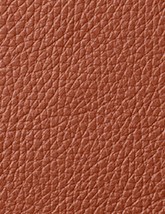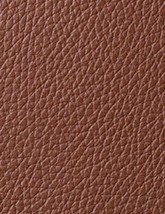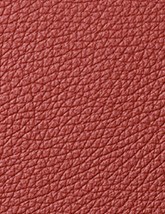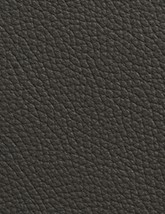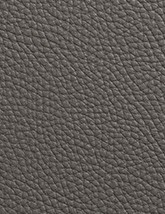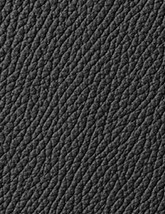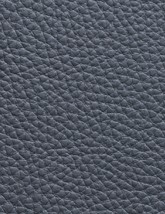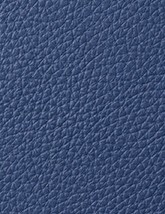Do you need cushion foam, furniture foam, furniture upholstery repair or sofa cushion repair? Our skilled upholsterers combine decades of experience to make us Seattle's preferred upholstery shop for restoring furniture.
Don't toss a favorite sofa or chair because it looks a little ragged. Bring your antique furniture back to life with new upholstery and modern seat foam. Replace obsolete horsehair couch cushion padding with the finest custom foam — we'll make your antique cushions soft, rigid or something in between. It's your choice.
Do you need replacement seat foam or seat cushion foam to upholster your contemporary furniture? We carry a complete line of durable foam cushioning products and foam for cushions to ensure that your reupholstered chair, sofa or sectional feels as good as it looks. Test different density foams in our showroom; feel what's best for your application. Our craftsmen will fabricate cushions to your specifications. At Upholstery Seattle, your satisfaction is our goal.
Weather in the Pacific Northwest can be hard on patio furniture cushions, outdoor pillows & outdoor furniture upholstery. The deck and garden furniture upholstery experts at Upholstery Seattle restore patio and teak furniture cushions, pool cushions, chaise lounge cushions, aluminium garden furniture and outdoor cushions & pillows. Drop by our showroom to view the latest indoor-outdoor fabrics from Sunbrella, Kravet and Duralee.
Some folks even keep two or three sets of patio pillows and cushions on hand to keep things fresh. Our experts will help you select the perfect fabric and foam for your outdoor rattan furniture.
Cane wicker chairs are not as durable as rattan furniture. Cane fibres are thin. They lose their elasticity and turn brittle when left outdoors. Natural wicker furniture is better suited for a sunroom or solarium.
Resin wicker, also known as all-weather wicker, is manufactured from synthetic materials, usually polyethylene. Polyethylene is a durable plastic that requires minimal maintenance; great for outdoor patio furniture. The experts at Upholstery Seattle reupholster both resin wicker patio furniture and natural wicker furniture.
Upholstery Seattle Furniture Projects
Transform your living spaces with Upholstery Seattle's exquisite custom-made bench cushions and window seat cushions. Our legacy of craftsmanship, spanning back to 1948, is a testament to our enduring commitment to excellence. When it comes to enhancing the comfort and style of your home, we take pride in every stitch and detail.
At Upholstery Seattle, we believe in using only the finest fabrics and vinyls to create cushions that are not only visually stunning but also exceptionally durable. Our materials are carefully selected to withstand the test of time, ensuring that your investment in custom upholstery pays off for years to come.
What sets us apart is our dedication to customization. Your comfort is our priority, which is why we offer custom cut foam in a full range of densities. Whether you prefer the plush embrace of super-soft foam or the firm support of a stiffer option, we tailor each cushion to your unique preferences. Our upholstery foam surpasses the standard foam used by furniture manufacturers, guaranteeing an unparalleled level of comfort and longevity.
Imagine sinking into the luxurious embrace of a perfectly tailored bench cushion or enjoying the scenic views from your window seat cushion, both crafted to meet your exact specifications. At Upholstery Seattle, we don't just create cushions; we elevate your living experience. Join the countless satisfied customers who have entrusted us with their upholstery needs, and let us transform your space into a haven of comfort and style.
Customers often ask why reupholstering a chair is more expensive than buying a new one. While that can be true, the better question is what would it cost to replace a chair with an identical one . If you have a comfortable, well built chair, it makes sense to invest in a makeover because a new one will cost a lot more.
This solid arm chair and ottoman are a case in point. The owner wanted to keep both, but instead of reprising the fabric, she wanted something a little more lively.
Before replacing the old chair cushion with Dacron and long lasting polyurethane foam, we secured the bottom with sturdy burlap webbing. The owner selected Season Tide, a bright blue fabric manufactured by Sunbrella.
We covered the ottoman with two inch foam and Charlotte Fabrics Sedona 3583 , an extremely durable woven polyester.
Witness the artistry of reupholstery mastery as we breathe new life into beloved relics like this 150-year-old antique chaise lounge hailing from France's illustrious Belle Époque era.
Upon its arrival at our workshop, the chaise lounge bore the marks of time and use. Its moss padding had lost its luster, fabric covers were worn, and the wooden frame showed signs of weariness.
Undertaking a journey of meticulous restoration, our skilled artisans meticulously stripped down the piece, reviving it by reattaching original coils, reinforcing the spring box, and strengthening the wooden frame.
Even the weathered arm was restored to its former grandeur using modern polyurethane foam. Carefully selected authentic, high-quality leather was employed to cloak the chaise lounge, sourced with reverence to honor its heritage.
No detail was overlooked, from the addition of new brass casters to ensure that the chaise lounge endures as a timeless heirloom for generations to come. Embark on a journey of restoration excellence with us, where tradition intertwines seamlessly with contemporary artistry. Entrust us with the rejuvenation of your cherished pieces, safeguarding their legacy within your home.
A customer recently snagged some antique rattan furniture at a garage sale and turned to us for new cushions and covers. It's a bit of a rarity to come across rattan in this neck of the woods, which is a shame considering its extensive history dating back thousands of years.
Rattan, derived from a climbing palm native to Southeast Asia, has roots tracing back to ancient Egypt. Its popularity soared in the 19th and early 20th centuries during the British colonial period, thanks to its lightweight and durable qualities.
Fast forward to the mid-20th century, and rattan furniture experienced a surge in Western popularity, especially in the United States. It became an emblem of tropical and mid-century modern aesthetics, gracing both indoor and outdoor spaces with its light and airy charm.
Yet, like all trends, the appeal of rattan waned in the latter half of the 20th century. Modern and minimalist design preferences took over, favoring synthetic materials and metals. Rattan, once a star, found itself associated with a more outdated or nostalgic style.
You might be surprised at the odds and ends we find inside furniture; everything from a shiny 1907 penny to an original Mickey Mouse watch. These hidden treasures often tell a story; in this case, they tell a number of stories. Instead of burlap, the arms of this antique chair were anchored in place with rigid paper matrix molds originally used to make newspaper printing plates. The molds appear to be cast in 1940 for the Clinton Herald, a newspaper in a small Iowa town on the Mississippi River.
We could've replaced the old paper matrix arm supports with something more contemporary, but they're working fine, so we left it the way it was. It'll be a nice surprise when the chair is stripped down and reupholstered fifty years from now.
The spring box and cushions were a different story. The support coils were in good shape, but they needed to be cleaned and retied. Then there was the padding. The old stuff was no good, so we cut brand new cushions from our premium quality polyurethane foam. After refinishing the woodwork, we reupholstered the chair with a plum colored chenille fabric. The fabric is soft, but durable. It should last for decades to come.
Padding Furniture With Raw Cotton
A set of antique dining room chairs came to us recently; their seats stuffed with clumps of raw cotton. The owner purchased the chairs several years ago from a Seattle antique dealer. He wasn't able to determine their history. As you can see in the first pick, raw or "unginned cotton" is messy, but during the 19th and early 20th centuries it was used as an inexpensive form of padding.
The raw cotton had seen better days, so we replaced it with cotton batting and an inch of polyurethane foam. This will not only last a lot longer than the original cotton, it's more comfortable.
The leather seat covers had deteriorated over the years. We could've reupholstered the seats with brand new leather, but the owner selected a dark brown vinyl with a simulated leather surface. Today's vinyls have evolved to the point where they're almost indistinguishable from genuine leather. This vinyl has the look and feel of the real thing, but it's easy to clean and much more affordable.
This distinctive antique accent chair features flared arms and an upholstered trapezoid back. Both the woodwork and the frame were in excellant condition when the chair arrived at our shop. The upholstery and foam were another story.
After fabricating new cushions from premium medium density foam, we turned our attention to the upholstery.
The owner selected a bright Jacobean upholstery fabric for the new cover. Jacobean style upholstery fabric dates back several centuries. This one is a woven polyester rayon blend with stylized floral embroidery. Rated 30,000 double rubs, it's not especially durable. But, this is a casual chair, so durability is not critical.
With the new upholstery, the owner wanted a slightly different look. For one thing, the skirt below the seat cushion had to go. This allowed the superb woodword around the deck to shine. She also decided to replace the gimp with a double welt. Both were excellent choices, as you can see in the second pic.
Stubby chairs like this Victorian gem were popular back in the 18th and 19th centuries for a number of reasons. For one thing, low-slung chairs allowed a mother to interact with small children without bending over. It was also easier to manage stiff corsets and steel-hooped cage crinolines when sitting closer to the floor. And a well appointed 19th century bedroom was often equipped with something called a slipper chair. They were useful for putting on stockings, tights and shoes.
As you can see in the first pic, the antique was in poor condition when it arrived at our shop. Nothing short of a complete makeover would do.
After stripping it down to the frame, we retied the old coil springs, then wrapped the bottom with traditional jute webbing. The medium density polyurethane foam and premium Dacron®
Channel back chairs get their name from the deep vertical channels in the backrest. They've been around forever; this one looks like it was manufactured fifty or sixty years ago. We found paperwork inside the frame indicating it was last reupholstered in Kirkland way back in 1980, so it's overdue for some attention.
A thorough inspection showed the frame and spring box were okay, but the foam was no good and the old upholstery was worn.
Before upholstering the chair, we installed brand new jute support webbing over the back and spring box, then went to work on the padding. Stuffing a channel back is time consuming. Each one of the padded ribs is separate. In effect, you have to sew and stuff individual pockets. It's not the sort of thing you'd want to try at home; we have special tools for the process.
The owner selected a stylish gold and burgundy fabric called Tallulah Raisin to replace the burgundy fabric. It's a large pattern, polyester jacquard manufactured by United Fabrics. The fabric's durability rating is a little low, but this is a casual chair, so it should be fine.
This antique chair is a cross between a lounge chair and a dining chair, AKA an occasional chair. Occasional chairs are used for decorative purposes, then pressed into service on special occasions. The owner wanted this one restored to the original white. After a careful inspection, we realized it needed more than new upholstery.
To begin with, the old foam was shot. Damaged foam can't be restored, so we tossed the old stuff and rebuilt the cushions from scratch using medium density polyurethane foam, cotton batting and Dacron®
For the upholstery, the customer selected an off white Naugahyde®
This one hundred year old mahogany settee has been reupholstered at least three times. When it arrived in our shop, it was long overdue for a fourth. It needed new upholstery, but fabric wouldn't be enough to restore this tufted settee to its original glory. We'd have to strip it down to the frame and replace almost everything.
After removing the fabric and foam we turned our attention to the frame. The frame itself was in good shape, but the coil springs needed to be reset. A lot of manufacturers forgo backrest springs to save money. Not this one; this sofa was made the right way.
With the coils properly anchored, we fabricated new cushions. This settee required two different foams; firm HR45 polyurethane for the backrest and arms, medium density HR33 for the seat cushion.
We used the old foam to pattern holes for the tufting. The custom buttons were fabricated from the new upholstery fabric, so they're a perfect match.
The burgundy upholstery fabric selected by the owner is reminiscent of the original without the cut design. It's a high performance polyester chenille treated with stain resistant Crypton; more durable than the original velvet and a lot easier to maintain.
Reupholster McGuire Dining Chairs
San Francisco based McGuire builds high-end furniture with a distinctive California flare. These stylish dining chairs feature twisted arms and legs with leather bound joints. The chairs were in excellent condition when they arrived at our shop. The owners simply wanted a different look; leather upholstery instead of cloth.
Upholstery leather comes in a wide variety of colors and finishes. You'll find dozens of examples in this Garrett Leather display . For these chairs, the customer selected a mahogany brown, semi-aniline leather with a waxy top coat. This style of leather is lightly pigmented to allow the slightly distressed natural grain to show through.
Full grain leather is thick, so it can be difficult to work with. The other drawbacks are cost and waste. Leather is not only expensive, you have to buy an entire hide, then cut it up. Since hides are oddly shaped, there's sure to be waste. This project required two hides so there were plenty of scraps left over.
Since price was not a concern for this customer, the leather worked out well. We also upgraded the chair backs with new foam and Dacron®
Simple Fix Restores Chair
This antique petit point chair was manufactured in Pittsburgh. The upholstery has held up well, but after more than half a century of wear, the webbing under the chair was shot.
Webbing holds the spring box in place, so before doing anything else we checked the coils under the seat pad. Fortunately, the springs were rust free and properly tied. That's unsual, given their age. All we had to do was realign the springs and replace the webbing.
Furniture webbing hasn't changed much over the years. The go-to webbing material remains good old fashioned jute, a natural fiber used in textiles for millennia.
When this chair was manufactured in 1957, the jute webbing was likely laid down before the coils and padding were installed. With the spring box already in place, we had to do it the other way around; install the webbing last instead of first. We webbed the chair bottom with fresh jute, then aligned and anchored the webbing to the coils. It was an easy, inexpensive fix that returned the chair to its original appearance.
Reupholster Wingback Chair
The wingback chair style dates all the way back to 17th Century England when fireplaces were a home's primary source of heat. The "wings" attached to the chair back were designed to collect heat from a fireplace and shelter the occupant from drafts. The wings on today's chairs are more decorative than utilitarian, but the basic design hasn't changed much over the years.
This one had been upholstered in a sloppy, haphazard way. The most obvious flaws were wrinkles on the arms and a padded seat deck instead of a proper cushion. It was in desperate need of a makeover.
The owner wanted to upgrade the fabric, but before fitting the new upholstery we had to repair the seat deck. The standard wingback features a sturdy, removable cushion. The cushion was missing from this one, so we removed the thin foam pad on the seat deck and replaced it with a custom built cushion. Check out pics of the original and reupholstered chair; with the new cushion, the wingback looks and performs the way it's supposed to. It's also easier to maintain and a lot more comfortable. The ottoman also required a cushion rebuild since the old one was thin and anemic.
The redesign and new upholstery turned an eyesore into a gem.
Reupholster Post War II Settee
This delightful antique settee was built just after World War II, according to a date stamp on the burlap webbing. The settee is notable for its whimsical design and its rich Philippine mahogany. The owner needed to update the upholstery to match a new interior space, so she contacted us.
After a thorough inspection we discovered the padding and woodwork also needed attention. The seat was filled with goose down. As you can see in the first pic, it compressed and shifted over time. The owner wanted to keep the old padding, so we added cotton batting to reshape and plump the goose down cushion. The sides and back also needed new foam.
While it's stylish and well built, this settee is not engineered for every day use. The concave wings are not structurally sound, some of the joint dowels crowd each other, and the wood grain only goes in one direction. One of the fragile wings appears damaged; somebody probably snapped it off by leaning against the arm. You can see a gap near one of the legs where the joint failed (top pic). We repaired the damage and reinforced the joints with truss head screws, but it may break again if another person leans on it. The side wings probably should've been laminated in the first place.
With the woodwork repaired and the padding restored, we went to work on the upholstery. Instead of matching the original fabric, the owner selected a contemporary lime green blend. She also wanted to replace the ornamental pink gimp with a double welt from the same upholstery fabric. The double welt gives the settee a richer, more finished look.
Here's an example of why it's always better to order fabric from us.
A customer wanted a cushion for a piano bench made from fabric she purchased on her own; and she wanted the cushion reversible. Reversible cushions are an excellent way to double the life of a cushion, but you have to have enough fabric to make it work. And wouldn't you know it, she didn't have enough! Fortunately, there was plenty of fabric to cover a single side, so we went to work.
Because there wasn't enough fabric, we had to make to make some design changes. One of the changes actually improved the look; we were able to hide the fabric seam at the bottom of the cushion (bottom row, center) and reposition the tie so it's less obtrusive. The cushion wasn't reversible, but it looked a little nicer.
If you live in Seattle and crave sunshine, a sunroom may help you make it through the winter.
Sunroom furniture is often repurposed for the patio or deck during the summer months. upholstered using outdoor vinyl or fabric
The first two pics show an old settee and arm chair from a sunroom.
Recovering A Double Arm Chaise Longue
The traditional chaise longue (a.k.a. psychiatrist's couch) is manufactured without arms or, in some cases, with only a single arm. They're built this way to make sitting down and getting up easier. Of course, there's always an outlier insisting on something different. Here's an example of a chaise we recently recovered with two arms.
The double arm style makes rising from the chaise a little awkward; it's necessary to slide forward before swinging a leg over the cushion deck. The designer of this chaise makes the process of standing up a little easier, however. Instead of being parallel with the deck, the arms on this chaise are short and angle down immediately. The arms are so low and truncated that they don't get in the way. It's an excellent compromise between style and comfort.
There's a fine line between a valuable antique with "character" and a damaged old couch destined for the junkyard. This lovely 19th Century settee is a diamond in the rough. Careful restoration and attention to detail transforms it from junk into a jewel.
While our designers are careful not to sacrifice an antique's "character", the restoration process often requires repair. For example, this settee's seat cushion is shot. The horsehair padding is salvageable, but the old latex foam has deteriorated into dust.
We toss the old latex and replace it with custom cut polyurethane cushion foam.
Repairing and reattaching the settee's broken leg is trickier. The leg snapped off years ago, leaving shards of the old dowel stuck inside. After removing what's left of the old dowel, we anchor the leg with a new dowel, wood glue and putty.
As often happens, the old wood is warped in places. When we attach the headboard, a crooked gap appears between the headboard and seat back. Our designers solve this problem by attaching a welt to the base of the headboard. The fabric welt nicely fills the gap. It's a small thing, but attention to detail can be the difference between something you save and something you eventually toss.
New Fabric For A New Sofa
Let's say you walk into a furniture store and fall in love with a sofa. It's the perfect size and style. And best of all, the price is right. You just gotta have it, except the fabric is wrong. Maybe the color doesn't work or the pattern makes you nauseous or the material is too flimsy. Don't throw up your arms and walk away. Have it reupholstered.
Here's an example of somebody who liked a sofa so much they bought it even though the fabric was no good.
The customer chose a bright fabric with a lively, contemporary pattern; quite a contrast with the original one.
Reupholstering a brand new sofa may seem wasteful, but under certain circumstances it makes sense. In this instance the sofa was on sale. When you add-in the cost of new upholstery the buyer got a great deal: the perfect sofa with the fabric they wanted at a price they could afford.
Deck chairs are often equipped with reversible cushions. Flipping a cushion every now and then is a great way to double the life of outdoor furniture. When this deck chair was brought to our shop for new upholstery, the cushions were held in place with Velcro®
Instead of using Velcro®
Just like their wild cousins, house cats like to perch in high places. That way they can regally survey their domain. Just as important, being high up allows them to look down on people.
® strips
® strips
When a kitty turned this headboard perch into a scratch pad, the owner called us. Replacing the cat was out of the question. Could we fabricate something to save the headboard from further damage? No problem.
A double-thick vinyl fabric reinforced with fiberglass would protect the headboard, but industrial strength vinyl is hardly suitable for a bedroom. The solution: an aesthetically pleasing slip cover to go over the vinyl. The cat will eventually tear up the slip cover, so we attached it using Velcro® . That way all you have to do is replace the slip cover when it wears out.
Diamond Tufting Antique Chair
You'll often find decorative diamond tufting in fine antique furniture. When restoring one of these chairs or sofas, we're careful to match the tufting pattern with materials that mimic the original look. For this project we're using a durable eggplant-colored microfiber. The fabric's thick, old fashioned pile is perfect for tufting.
Tufting needs to be done carefully or results can be disastrous. Begin by measuring precisely. The primary row of buttons should be centered near the midpoint of the seat. Divide the seat length by the number of rows. Use the resulting number to evenly space the rows. The one closest to the midpoint will serve as the primary row.
Space the button holes -- in this case five -- evenly across the primary row of the furniture foam. Repeat the process for each row.
This chair's tufting pattern is a little tricky because the button count on each row alternates between odd and even numbers. This is when high school geometry finally serves a purpose! We draw a series of vertical, horizontal and diagonal lines on the foam to make sure each button hole is positioned properly. After the button holes are measured and drilled, we wrap the seat in Dacron to enhance softness. Then we fabricate buttons to match the material and begin the actual tufting process.
Drape an oversize layer of fabric over the foam. Using a finger or pencil, push the fabric covering the first hole all the way down. Align and smooth the resulting pleats. Repeat the process in the holes beside, above and below the first one. These four holes form a diamond shape. Dress-up the pleats, then thread the buttons.
Using a long tapestry needle and heavy coat thread, pull each button into place. Anchor the thread to clumps of durable cotton batting beneath the deck. Make sure the buttons are set to the same depth. The tufting process sounds straightforward, but getting it right requires experience and a feel for fabric, foam and furniture. Diamond tufting is not for the faint of heart.
Aladdin Travel Trailers, originally built in Oregon from 1963 through 1969, were King of the Road in the sixties and seventies, especially in the Pacific Northwest. Most were built to be affordable, using relatively inexpensive materials and manufacturing techniques. Owners were sometimes called "Tin Can Tourists". For obvious reasons, you don't see many of these 50-year-old trailers on the road anymore. Most are either long gone or in pretty bad shape.
This vintage Aladdin from Omak was all but abandoned when J.E., a University of Washington alumnus, had a brainstorm -- transform the old thing into a state-of-the-art tailgater for Husky Football games. What a great idea!
It took lots of elbow grease to get the old Aladdin back together, not to mention roadworthy. By the time it reached the parking lot of our shop, it looked fresh off the production line! Well, maybe not that good...but, J.E. had done an excellent job renovating it.
With the trailer back in shape, it was time for new upholstery.
Instead of restoring the interior upholstery to its original look, she decided to have a little fun. Husky Purple -- in a nice assortment of prints, solids, and faux alligator leather -- was a must. Add in some eye-candy green and blue and you end up with a tailgater even author Ken Kesey might have envied. Then again, who cares about Kesey? He went to the University of Oregon.
New Life For 1967 La-Z-Boy
The venerable La-Z-Boy has long been considered the "Cadillac" of recliners. Original La-Z-Boys carried lifetime warranties. This one manufactured in 1967 is still in great shape; the frame is sturdy and the reclining mechanism works fine. Unfortunately, the chair's warranty doesn't cover things like padding and fabric. Every few years it needs a makeover.
A faded paper tag affixed to the frame indicates this recliner was last upholstered in rural Iowa more than 35 years ago. New upholstery is long overdue.
In addition to the frame and reclining mechanism, the no-sag spring bed remains in excellent condition, so we're able to reuse the original parts. While the structural components are fine, the foam, fabric and padding are shot. After removing and recycling the worn out materials, we cover the spring bed with a layer of fresh cotton batting. New polyurethane foam cushions wrapped in Dacron go on top, but before installing the cushions we get to work on the upholstery fabric.
The fabric is a "Meadow" green, heavy-duty, nylon micro-suede. We select a dark green fabric for contrasting welt and buttons. The manufacturer, Charlotte Fabrics, describes the fibers as "non-directional", but we detect a slight nap in the fabric. As always, we're careful to align the nap "up and down" for maximum comfort and durability.
The Dacron wrap adds a couple of unwanted centimeters to the padding. After trimming the excess foam and attaching the buttons, the new cushions fit like a glove. The new upholstery energizes an old recliner.
Some find it tempting to purchase a few yards of fabric on the Internet and upholster their own furniture. Not a good idea.
We see these do-it-yourself wizards every once in a while. Midway through a project they'll toss their arms in frustration and bring us their half-finished chair. It usually ends up costing more to fix their mistakes and finish the project than it would've cost in the first place. Furniture upholstery is one place you don't want to cut corners.
This sturdy, hardwood wingback chair was upholstered in somebody's garage several years ago. It's a great example of what not to do . The fabric is wrinkled many places because it wasn't properly stretched and stapled to the frame. The arms are not correctly padded.
There's little more than a thin layer of Dacron separating the seat from the zig-zag springs. The cotton batting and edge roll are gone. In short, this wingback chair is a mess. The owner decided to get it done the right way this time.
With the padding restored, it's time to measure and cut the upholstery fabric. The fabric is a bright linen print. Aligning the fabric pattern so it matches in every direction is not for the inexperienced or faint-hearted. Notice how the large bird in the print is centered on the chairback, the seat cushion and the wing. Also notice how the chairback picks up the pattern on the seat cushion.
By the time we're finished, the wingback is correctly rebuilt and upholstered. It's not only a lot more comfortable and durable, it looks better than new!
The frame is in good shape and most of the foam is still usable. Everything else goes.
After stripping the chair, the first thing we do is repair the deck. A fresh sheet of cotton batting and edge roll does the trick. Each arm is then tightly wrapped in Dacron batting.
It's important to pad the deck and arms so they retain some stiffness. You don't want a traditional wingback with mushy arms or a soft deck. This is the sort of judgement call that only comes with experience.
A Great Grandfather's Legacy
There's usually a story behind an antique chair, especially when it's been in the family for generations. These adorable little chairs (below left) were handmade by our client's grandfather when he lived on the Washington coast. Originally built for his two daughters (they're different sizes because the girls were different ages), the tiny chairs have bounced from one side of the family tree to the other.
With a new generation on the way, it was time for a facelift.
The smaller chair was made for our client's mother. She always liked the plush, burgundy upholstery fabric, so we found something similar. The bigger chair was done in a complimentary color. Blue for a boy. Red for a girl. Soon, another generation will treasure these antiques, lovingly built by their great grandfather more than a century ago.
A soft, charcoal vinyl upholstery with chartreuse piping will do the trick. The original padding was little more than a thin layer of cotton batting, so we rebuild the seat cushions with two inches of polyurethane foam wrapped in dacron.
Except for the steel frames, they're entirely new chairs. Unlike the originals, these chairs work well with contemporary furniture. Don and Betty Draper would hardly recognize them!
Certain types of chairs, sofas and tables instantly evoke a time and place. These diner chairs are straight from an early episode of "Mad Men ". Sadly, what's left of the marbled plastic skin is a mess. Tattered upholstery isn't the only problem; the chrome frame is starting to rust in places. Because these distinctive chairs are so iconic, they don't "play well" with other furniture styles. The only practical solution is to drag 'em into the 21st Century.
Most cat lovers will tolerate a little kitty cologne now and then. After all, marking turf is part of a cat's job description. But, when Fluffy's territorial dispute with the neighbor cat escalates into thermonuclear furniture spraying, it's hard to ignore. Removing cat stench from furniture foam (below) is just about impossible. The only solution is radical surgery.
Fabricating an entirely new cushion would be costly and wasteful. Instead of starting from scratch (no pun intended), we cut out the damaged section and replace it with a block of brand new six inch polyfoam.
Since the original foam is slightly thicker -- six and a half inches -- the sides don't quite match. Stacking a sheet of durable, half inch scrim (center below) on the replacement block does the trick. Layering is a lot less expensive than custom-cutting new foam to match the original dimensions.
Our heavy-duty adhensive holds all the pieces in place. After wrapping the cushion with two layers of dacron, we put everything back together. The cushion is good as new.
When a favorite chair is coming apart at the seams, it's time for a furniture "tune-up". These distinctive, early 20th Century sidechairs look great from a distance, but the upholstery is worn, the joints wobble, and the frame is cracked. Refurbishing old chairs like this can be more difficult than you think.
We begin by repairing the damage done by another upholstery shop. While stripping the chair, we discover a thin layer of scrap fabric is the only padding in the seat. The seat's brass springs are held in place with jute webbing instead of being properly tied to the frame. Because they're not tied down, some springs are bent. Glue used to join the frame is failing. Stress caused by the loose joints is cracking the frame. Worst of all, the arm pads and trim are attached with a messy silicon adhesive instead of being tacked down.
After removing the old webbing, padding and upholstery, we glue and clamp the joints. The cracks are repaired the same way. The spring box is next. Brass bends easily, so we have to be careful reshaping and tying down the springs. With the springs in place, we rebuild the seat using layers of burlap, cotton batting, polyurethane foam and dacron.
The original upholstery fabric is too badly worn to use again. Fortunately, one of our suppliers manufactures a nearly identical fabric. It's a cotton polyester blend tapistry called "Vintage". We trim the new fabric with burgundy gimp. The refurbished chairs not only look like the originals, they're sturdy and much more comfortable.
Upholstering a Fainting Couch
The French take credit for popularizing the chaise longue, but the idea of combining a chair with a daybed goes all the way back to ancient Egypt. If you remove the armrests from a chaise longue it becames a "fainting couch", popular in the 19th Century. Despite its clean, simple lines, properly reupholstering a fainting couch requires experience and a trick or two.
After stripping the fabric from this fainting couch, we discover the spring unit supporting the cushion needs some attention. The hardware is in good shape, but the springs are slightly off-kilter. Adjusting the spring box does the trick. There's still some life in the old polyurethane foam, so we leave that in place. All we need is a blanket of new cotton batting and we're ready to go.
The upholstery fabric we're using, a rayon-polyester blend, is extremely durable, but stiff. Upholstering with a rigid fabric like this can be difficult, especially around the curves and corners. After trimming the new upholstery to size, we slice "relief cuts" every few inches along the bottom. These relief cuts create "give" in the fabric. With the fabric more pliable, we're now able to drape the upholstery in place wrinkle-free.
Custom made upholstery buttons and cream colored gimp to cover the seams provide the final touches.
Repairing Cat Scratch Damage
If you own a cat, or a cat owns you, the picture below left may look familiar. Some cats consider it their duty to destroy your furniture. Instead of using a scratching post, they'll sharpen their claws on your favorite living room sofa, easy chair or love seat. We can't prevent a cat from damaging your furniture, but we do know how to repair it.
The cushions on this biscuit-tufted leather sectional are ripped to shreds in places. Reupholstering the entire sectional with brand new leather would cost an arm and a leg. Repairing just the damaged squares with new leather is also problematic. While it's possible to replace the damaged biscuit squares with brand new leather, the color and texture might be off.
There's a better, more affordable way to get the job done; use undamaged leather from the sectional's back to repair the cushions.
After "harvesting" unblemished leather from the back of the sectional, we carefully remove the damaged biscuit squares. Instead of instantly tossing the old biscuits, we use them as patterns for the new ones. We then cut the "replacement" leather to size and sew the new squares into place. Because the leather for both the old and the new biscuit squares comes from the same source, the pattern and color closely match.
Now we have to replace the leather we used to repair the biscuits. Since the leather covering this section faces the wall, matching the color and texture is not as critical. Recycled leather is a perfect choice for this. It's durable, affordable and it looks great.
As you can see (above) the new biscuit squares are nearly identical to the old and the recycled leather we used for the back looks great. The customer was kind enough to send us this note: "I just wanted to THANK YOU again for the amazing work you and Mike did on the couch. It is right next to an identical piece and looks exactly the same. I was delighted, blown away, and very grateful." – Tess
Airstream Trailer Restoration
The venerable Airstream Travel Trailer is an icon of the American road. The owners of this 1966 Airstream chose Upholstery Seattle to reupholster the interior. This Airstream was originally upholstered in Herculon fabric. The Herculon of yesteryear was durable and stain-resistant, but it didn't always hold up under direct sunlight. After meeting with the owners, we recommended switching to a different upholstery fabric.
Sunbrella® -- an acrylic fabric -- is ideal for this application. It's durable, easy to clean and doesn't fade, even under direct sunlight.
Sunbrella® doesn't fade because it's specially manufactured. When ordinary fabrics are dyed, the color only penetrates the surface. It washes out or fades over time. The color in Sunbrella® soaks through the entire fiber. This color-to-the-core technology makes Sunbrella® easy to clean and fade-resistant. It's also water resistant, mildew resistant and breathable.
Turkish Corners on Wingback Chair
Here's an example of a poorly upholstered wingback chair. Staples show through seams, the fabric droops, the nap is wrong, and the original seat cushion foam is gone. Because the cushion was replaced with static padding, the chair corners are now pleated. And the pleats are sloppy at best. This chair is in desparate need of new upholstery.
We start with the new fabric; a traditional blue velveteen. When upholstering with velveteen, it's important to consistently align the nap in a downward direction. That way, when somebody rises from the chair they'll smooth the nap instead of brushing against it. Brushing against the nap not only wears down the fabric, a "ruffled nap" takes on a slightly different color. Properly aligning the nap is critical.
The corner pleats also require special attention. When the chair came to us, the corner fabric was bunched together and tucked under the padding almost as an afterthought. The customer wants to keep the old padding instead of restoring the seat cushion, so we need to dress up the corner pleats. We do this by smoothing the excess fabric into what's called a Turkish Corner (above right). Welting provides the final touch.
Restoring Antiques With Excelsior
In the days before polyurethane foam, furniture makers used cotton batting, horsehair and something called excelsior or "wood wool" to cushion chairs and sofas. Excelsior is manufactured from tree fibers. It's reminiscent of flattened straw. Faithful antique restoration often requires natural materials such as excelsior.
Newly Upholstered Chair
These dining room chairs from the early 20th Century are perfect candidates for restoration. They're solid, stylish and feature beautiful hand-carved accents.
To keep the restoration authentic we recycle the chair's original cushioning materials including the sturdy cardboard edgeroll, now nearly a century old. The corners are padded with horsehair. Horsehair is expensive and attracts allergens, but it's durable and retains shape. The chairmakers used it to anchor the seat corners. Next, we clean and reapply the "wood wool". The original cotton batting goes on top. New upholstery fabric provides the final touch. When we're done, these dining room chairs are all set for the 21st Century!
Restoring a Lady's Side Chair
Early 20th Century American furniture is usually better built than anything manufactured today. Instead of junking a shabby old chair, have it re-upholstered for less than the cost of a brand new one.
This lady's side chair is a great example. After removing the tattered fabric and old padding, the craftsmanship is plain to see. Notice the solid hardwood frame, the double support beams along the side and back, the fashionable Queen Anne legs, and the rolled corners on the arms. You won't find a stick of plywood or a single staple in this antique.
Aside from replacing the down cushion and burlap backing, all this old chair needs is new fabric. A rich, Jacquard print and piping transforms it from a piece of junk into a jewel!
Modernizing Antique Chaise Longue
Modernizing a treasured antique presents special challenges. How do you update a 1920’s hardwood chaise longue without sacrificing the original look? Our designers do it by combining old and new techniques with modern and traditional materials.
The horsehair padding we find after stripping this sturdy, well-made chaise was common during the early 20th Century. While it’s possible to recycle the horsehair and cotton batting, we recommend against it. A lot of people are allergic to horsehair and the many allergens it attracts. This is where modern fabrics and materials come in. Foam padding and Dacron batting are a better way to go.
The hardwood frame is in great shape. The precision crafted dadoes and dowels are rock solid; no need for changes here. The springs and webbing are another story. The springs are okay, but they were tied to the frame the wrong way during a previous restoration. Some of the ties are rotting. The underneath webbing is also a mess. We replace the old webbing and backing with fresh jute and burlap. In this application, using traditional materials makes sense. Natural materials breathe. Breathability is a big plus in a climate like Seattle, where mold and mildew can be a problem.
Properly fastening the springs to the webbing requires a technique called an ‘eight way tie’. This traditional method locks the springs in place. Finally, the chaise longue is draped in a woven chenille fabric, then welted to the frame at the bottom. A bolster cushion provides the final stylish accent.
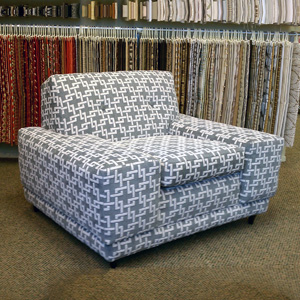
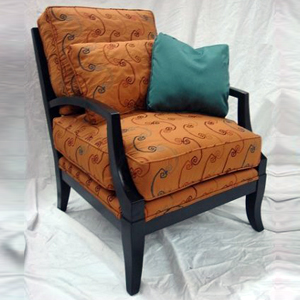 If you're looking for fabric, stop by our upholstery showroom just off Aurora on 96th; you can select from literally hundreds of luxurious fabrics and handsome leathers manufactured by Kravet, Charlotte, Sunbrella & all the top mills.
If you're looking for fabric, stop by our upholstery showroom just off Aurora on 96th; you can select from literally hundreds of luxurious fabrics and handsome leathers manufactured by Kravet, Charlotte, Sunbrella & all the top mills.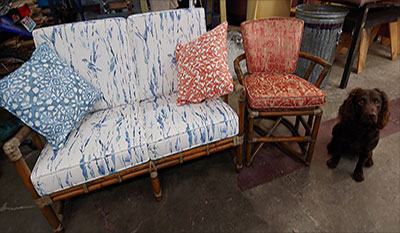 Furniture Foam
Furniture Foam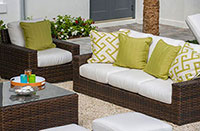
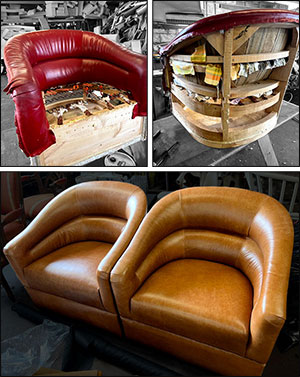 Rattan is an excellent material for outdoor furniture. It weathers well and provides comfortable seating. Rattan is also "fashion flexible" — change the pillows and cushions to create a new look for your patio or deck.
Rattan is an excellent material for outdoor furniture. It weathers well and provides comfortable seating. Rattan is also "fashion flexible" — change the pillows and cushions to create a new look for your patio or deck. Garrett manufactures leather from animals grown at normal rates and allowed to graze on natural grass in spacious, open fields. Under these natural conditions, the integrity of the fiber structure is stronger and intact without any damage caused by unnatural growth rates, barbed wires, or brands. Here's a list of popular styles and colors available from Garrett:
Garrett manufactures leather from animals grown at normal rates and allowed to graze on natural grass in spacious, open fields. Under these natural conditions, the integrity of the fiber structure is stronger and intact without any damage caused by unnatural growth rates, barbed wires, or brands. Here's a list of popular styles and colors available from Garrett: